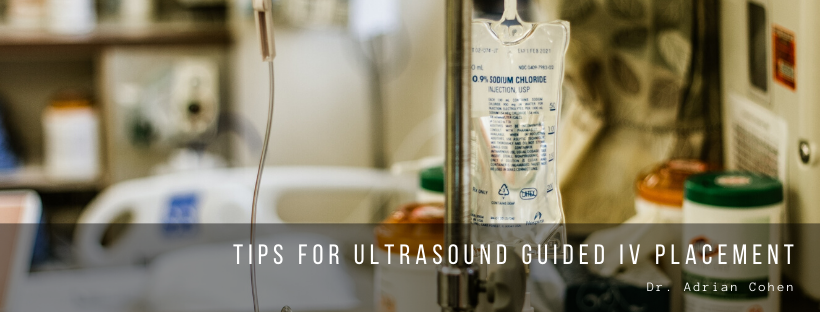When working in a hospital you’ll occasionally encounter an unstable dialysis patient whose providers are struggling to give venous access to. At this point, many healthcare providers will use an ultrasound to find the vein they’re looking for, hopefully making things a little easier and allowing proper care to be provided. Struggling with venous access can also frustrate the patient, which ends up causing many healthcare providers to resent this task altogether. Luckily, an ultrasound-guided IV can decrease complications and improve the chances of success. Here are a few tips to help improve the odds of success and avoid any potential risks.
If You Can’t See Any Good Veins, Look Distally
In most situations, healthcare providers will scan proximal to the antecubital fossa when trying out ultrasound-guided access. It’s suggested that you should think about looking distally while utilizing a shorter and smaller gauge needle. Doing this helps you avoid injuring more proximal veins and allows for vessel preservation. Radial veins are a good candidate for IV placement in most patients but are often discounted due to their size and proximity to the radial artery. On the contrary, the radius stabilizes these vessels and can make them less likely to roll or dislodge the catheter. It’s also possible to use the “intern vein” if needed.
If You Only See Tiny Veins, Look For A Y-Shaped Junction Between Veins
Don’t fret if you’re only finding small veins. Even these can be cannulated successfully by looking for a Y-shaped junction where two veins merge. Approaching this venous junction allows the needle to puncture perpendicularly against the vessel wall while remaining parallel to the overall vessel course. In order to do this, you must first mark the location of the junction on the skin as well as the direction of each branch distally and proximally. After, puncture the skin between the distal branches 1 – 2 cm distal to the junction. You’ll want to advance the needle and maintain it between the two distal branches until they converge, continuing towards the junction until the needly is visible in the larger and more proximal vein.
If The Vein Rolls Away As Soon As You Get Close, Try Approaching From the Side
Veins can collapse easily or fade behind artifact as the needle approaches, especially in patients with sclerosed vasculature or that are dehydrated. When this happens, a great alternative is to approach the vein from the side as opposed to from above. In order to do this, you’ll want to intentionally pierce the skin lateral or medial to the vessel, followed by advancing the needle approximately 1cm until it lies alongside the vein. You’ll want to then aim for the vessel from beside it. This technique makes it so needle artifacts don’t obstruct visualization of the vessel.

